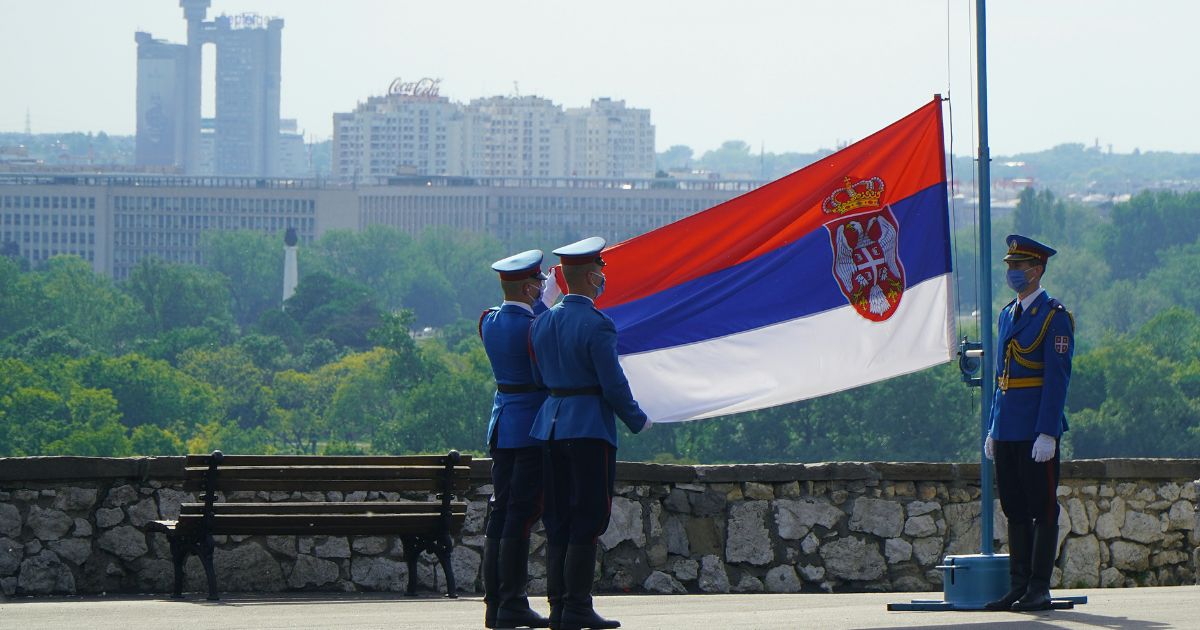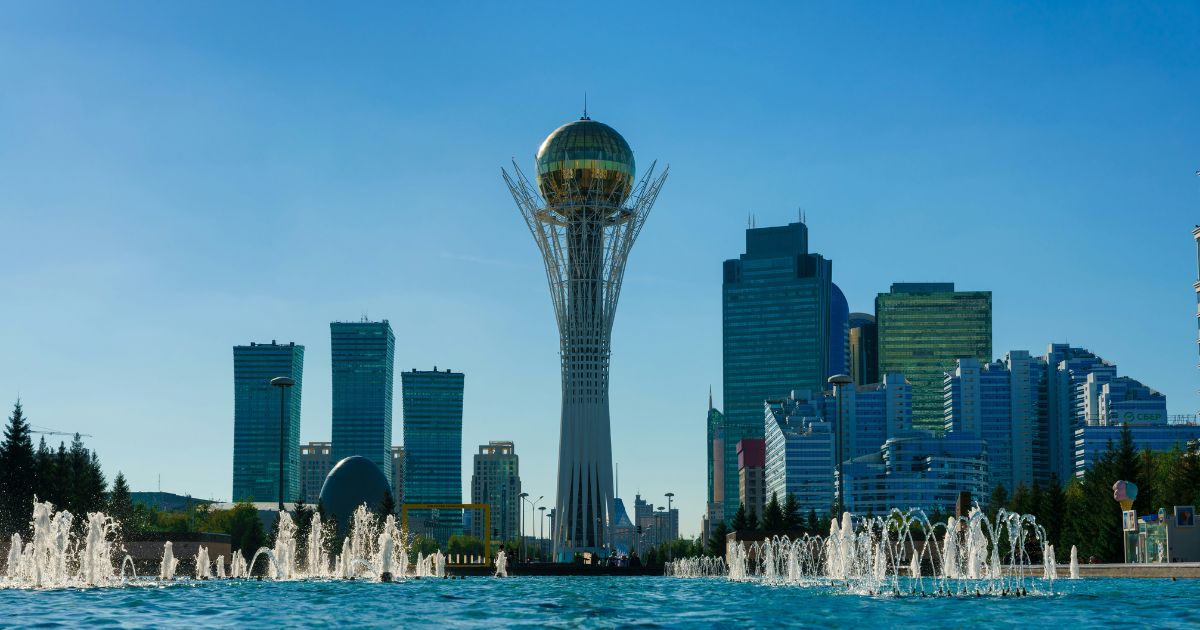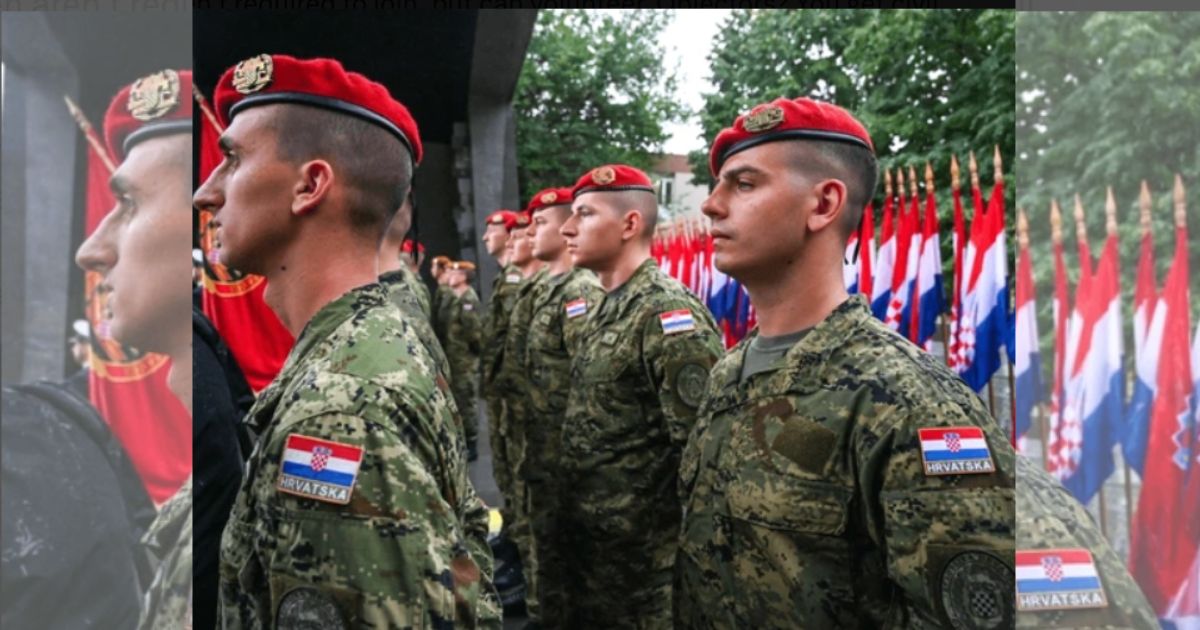Belgrade hosted one of its biggest military parades in decades on September 20, rolling out tanks and missile systems down New Belgrade’s streets and sending fighter jets screaming overhead of the capital in a display meant to highlight the prowess of the Serbian Armed Forces amid political tensions at home and rising instability throughout the Western Balkans.
The “Strength of Unity” parade, to celebrate the Day of Serbian Unity, Freedom and the National Flag, united about 10,000 participants, the defence ministry said. The Serbian armed forces exhibited about 2,500 weapons and equipment, including over 600 vehicles, 70 aircraft, and 20 warships. The highlight for many was the premier exhibition of 19 weapon systems, which were shown in public for the first time — proof of Serbia’s modernising arms.
President Aleksandar Vucic, who hosted the event, referred to the parade as an emblem of stability and power, and an assurance of peace and security. Others criticized it as a political display of power used to frighten citizens after months of protests against the government and student blockades.
A well-organised performace
The parade started with a 300-metre-long Serbian flag led by soldiers, followed by an artillery salute and the national anthem. Patriotic tunes such as Tamo Daleko and Ovo je Srbija were played over loudspeakers as the crowds, bused in from all over the country, waved flags handed out by the army.
Foreign leaders were also present. Among the guests were the defence chiefs of Cyprus, Hungary, and Azerbaijan, the chief of France’s Air Force, China’s, and the US top military commanders, and the UAE president, Sheikh Mohammed bin Zayed Al Nahyan. Their attendance showed the reach of Serbia’s alliances that stretch from Nato member states to Russia’s allies and Gulf monarchies.
Off the official stage, the mood was tense. Police cordons held students and citizens back from the main stage. Some witnesses said they were advised by plainclothes police that they could go in one by one and not carry banners.
Support for the troops, not the government
Students from the University of Belgrade, who have spearheaded ten months of anti-government protests, organized an alternative rally. In contrast to their past rallies, which opposed Vucic’s regime, Saturday’s march was specifically presented as a show of solidarity for the soldiers themselves.
In a statement, the students proclaimed that the military “is not private and personal, the army is the people’s”. They emphasized three rules for the event: no insults against parade participants, no megaphones or whistles, and only plain national flags without coats of arms.
The student movement sought to draw a line between ordinary soldiers and the political leadership that commands them.
Serbia’s foreign policy with multiple facets
The military equipment that was on display showcased Serbia’s multi-vector foreign policy. Among the recently disclosed acquisitions were Rafale multi-role fighter aircraft from France, Chinese anti-aircraft missile systems, Israeli surveillance drones, and Russian armoured vehicles.
Belgrade has long been a militarily non-aligned, neutral state, not joining NATO while intensifying cooperation with the alliance under the Ohio National Guard’s State Partnership Programme and recurring joint training with US troops. Simultaneously, it has traditional defence relations with Moscow and pursues close relationships with Beijing.
This balancing game is not risk-free. Serbia was criticized by Moscow for indirectly selling weapons to Ukraine. Serbia retaliated by saying it suspended all arms exports this year. Meanwhile, Vucic has attracted ridicule from the EU, opposing sanctions on Russia while maintaining that he remains serious about joining the EU.
Regional security issues and militarization
The parade occurs while increased military activity in the Western Balkans is heightened. Croatia and Serbia both significantly raised defence expenditures. Albania and Kosovo have both stated intentions to increase their militaries and start domestic defence industries.
In March, Croatia, Albania, and Kosovo signed a trilateral defence memorandum to enhance interoperability by conducting joint exercises and training. Belgrade called the agreement “provocative,” with Vucic criticizing the signatories for starting an arms race. “We will not fire first,” he declared in June, “but we have to be prepared.
There are concerns that the interaction of growing defence spending, rival blocs, and unsettled border clashes might revive tensions in a region still reeling from the conflicts of the 1990s. Bosnia, where rhetoric about nationalism is on the rise, is another source of volatility.
As the world focuses on Ukraine and the Middle East, the Balkans are subtly moving into a rearmament phase. The danger is not an imminent war, but a slow shredding of trust and stability.
Authoritarian overtones
At home, the parade was widely interpreted as a show of strength by Vucic. The event was held on the same boulevards where police recently fired tear gas at anti-government protesters only a month previously. For opposition forces, the symbolism was intentional: a reminder of who wears the streets.
Critics contend parades like these contribute less to the support of defence than to the exhibition of political power. Vucic’s Serbian Progressive Party (SNS), which has ruled politics for over a decade, has been accused by critics of subverting democratic institutions, silencing independent media, and employing security forces for political purposes.
The visiting dignitaries along the parade route symbolized Serbia’s strange diplomatic status. Only weeks before, Vucic visited China’s World War II Victory Day military parade. He had been a guest of honor at Moscow’s Victory Day parade on Red Square earlier this year, flanked by Russian and Chinese officials but also Slovakia’s Robert Fico, the sole EU leader who made an appearance.
Belgrade’s engagement in such a foray is starkly contrasted by its overtures to NATO allies such as the US and France. It also serves to underscore the paradox of a government that claims to be pushing for EU membership yet is unwilling to get on board with Brussels for major security concerns. The approach enables Vucic to maintain lines open to everybody, but it also has the potential to leave Serbia alone in the cold if both East and West begin to regard its balancing act with skepticism.
An act of strength — or weakness?
As tanks rolled and jets thundered overhead in Belgrade, the parade presented the image of a confident, united Serbia. However, beneath the show, there was a sense of insecurity: about growing regional militarisation, about the questionable domestic legitimacy of Vucic, and about the ambiguous geopolitical direction of the country.
To the rest of Serbs the parade was a source of pride as it proved the military background of their country and independence. To others it was a painful flashback of authoritarian tendencies, and the dangers of militarisation of a weak region of the world.




